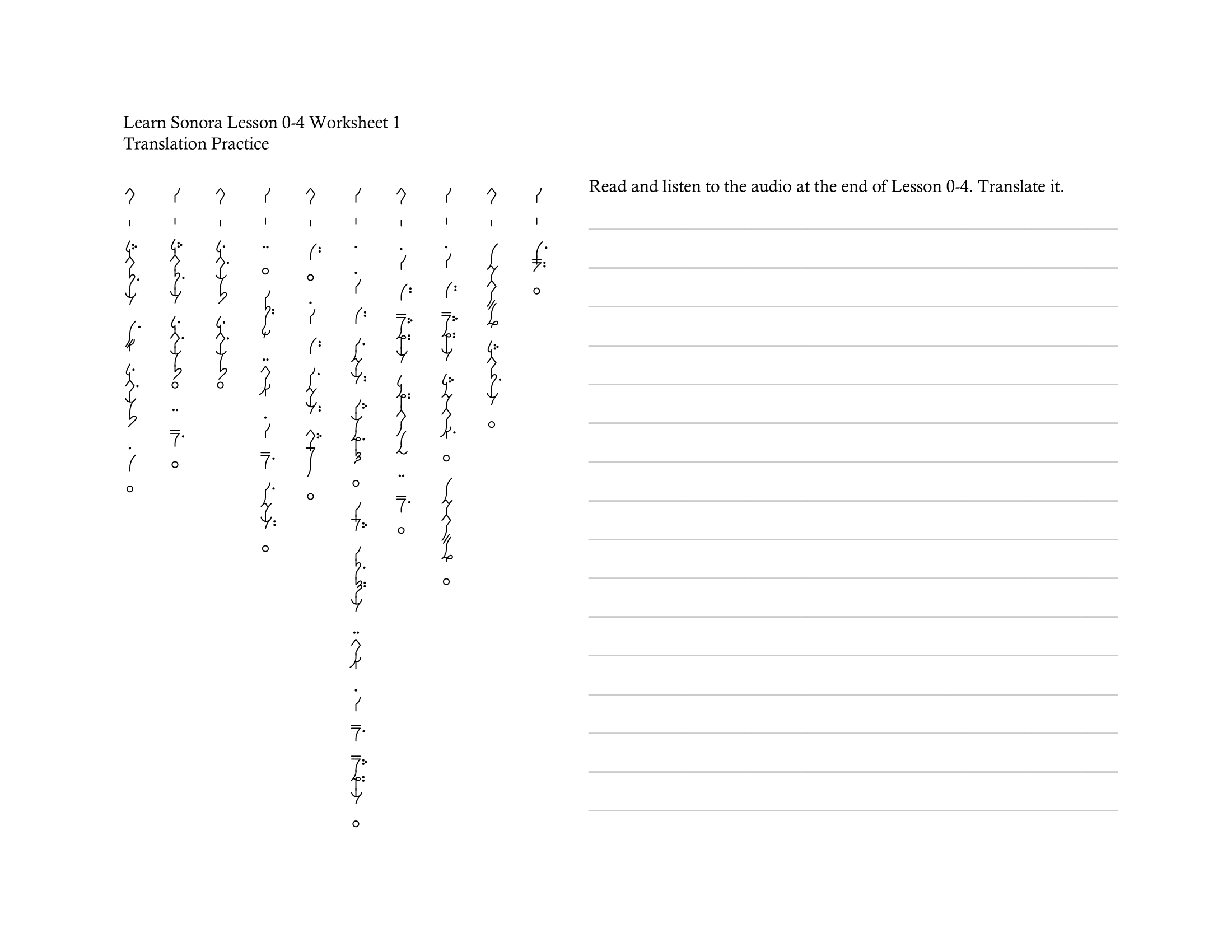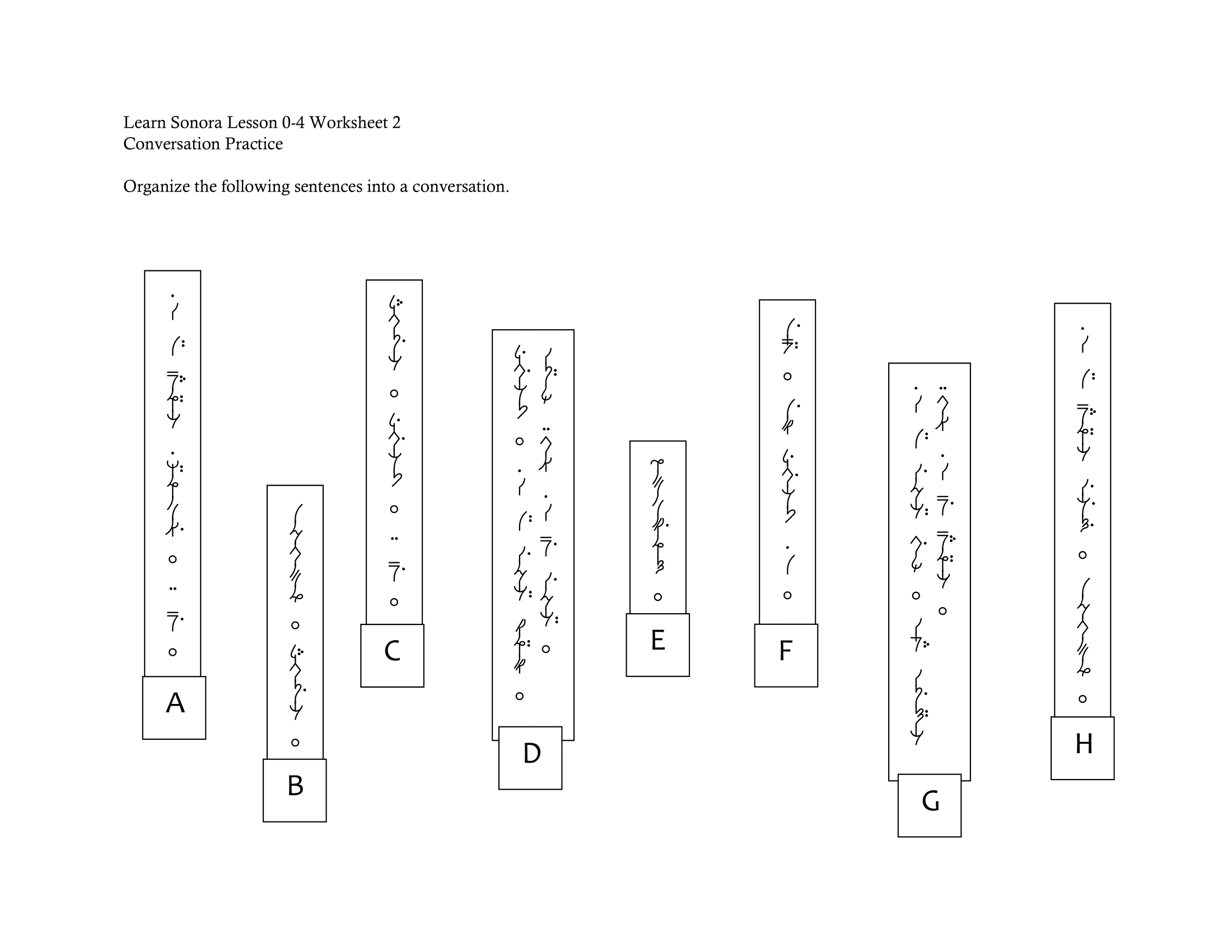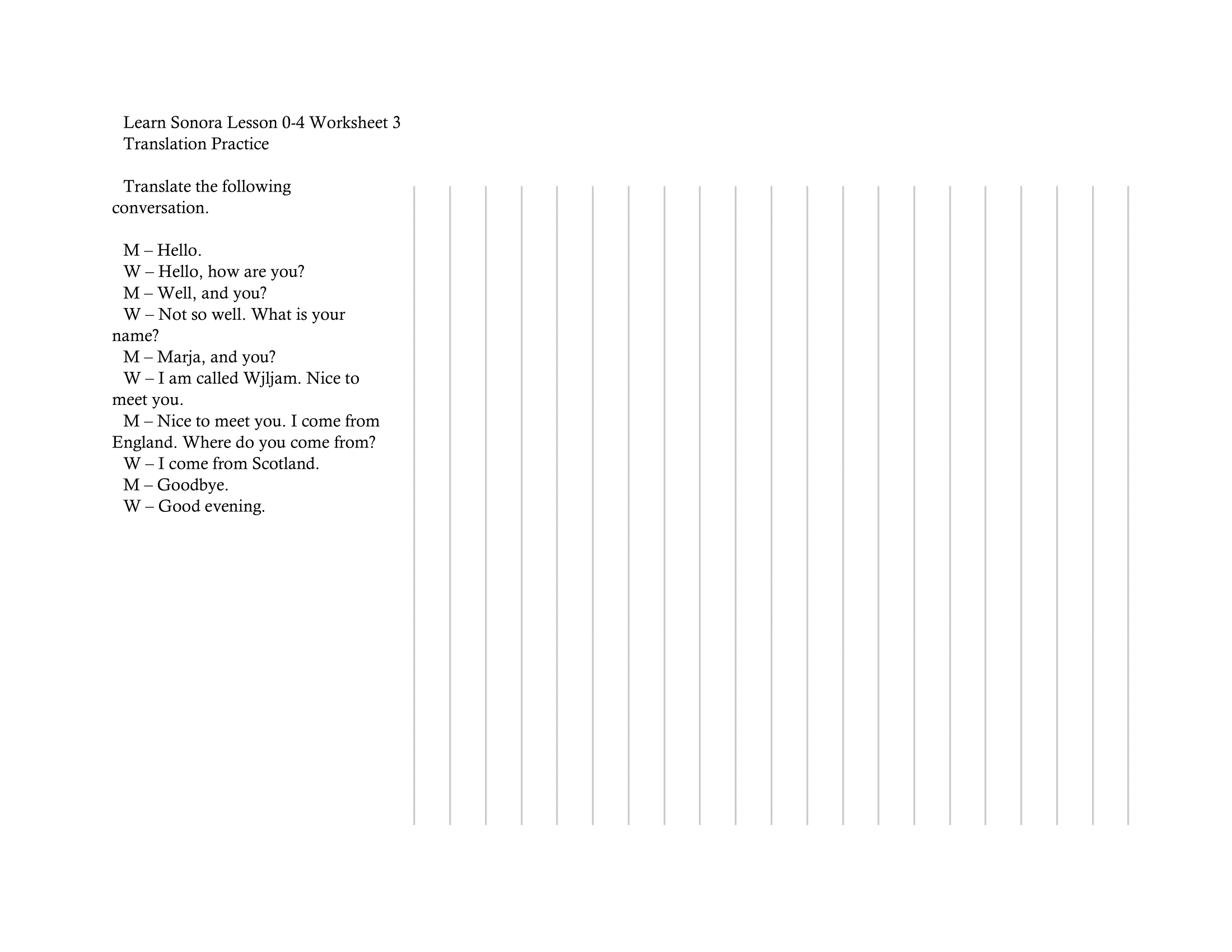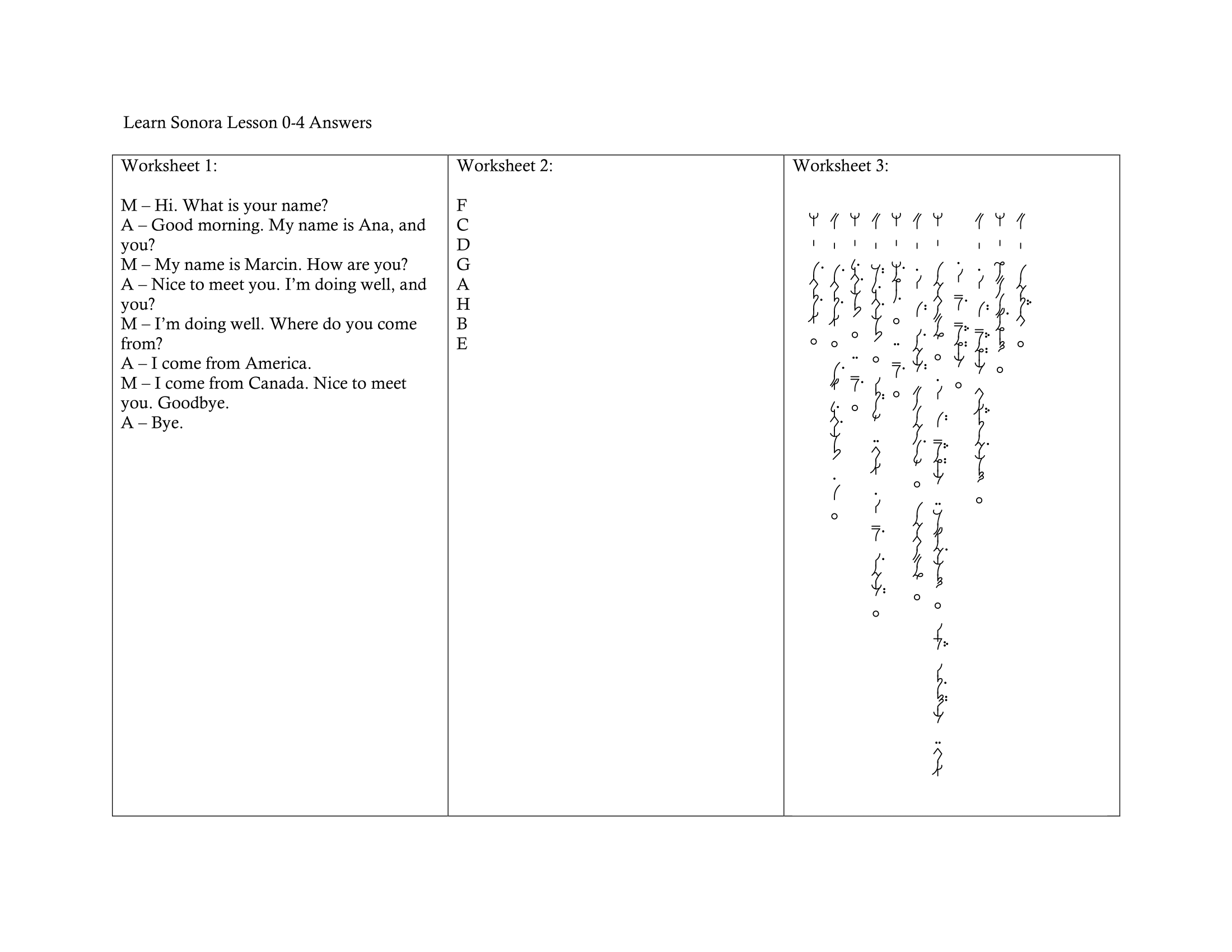Lesson 0-4: Hello World
< Previous Lesson | Next Lesson >
Letters and sounds are great and all, but I think it’s time to finally start using the language! And where else to begin but with some greetings? Take a listen and follow along with the conversation.
m - jave . ktem esk ak va kalne .
a - andem . ak je kalne ana, e va .
m - ak je kalne martsjn . jag pasant aj .
a - jlswr . pasant, e va .
m - pasant . kfo ktaden esk ak va voren .
a - ak ve voren amerjka .
m - ak je voren kanada . jlswr . rwjgard .
a - jave .
Greetings and Goodbyes
Let’s break that conversation down, starting with greetings and goodbyes! Throughout the conversation, there are four greetings and goodbyes, though there’s a little trick to one of them.
jave
It’s the one with a trick that we’re going to start with, as it is by far the most common way of greeting someone in colloquial Sonoran. jave is not just a greeting, but also a goodbye, translating to both ‘hi’ and ‘bye’, much like the French ‘salut’ or Italian ‘ciao’.
jastak
jastak is a more formal ‘hello’, useful for business meetings or greeting strangers such as salespeople or customers.
rwjgard
Just as jastak is a more formal ‘hello’, rwjgard is a more formal goodbye.
andem
Directly translating to ‘morning’, like jave, andem can be used as both a greeting and a goodbye. Unlike jave, it would be strange to use andem at any time other than the morning.
postan
postan translates to ‘afternoon’ and is used similarly to andem.
jltos
Rounding out the times of day, jltos translates to ‘evening’. jltos can also be used up to about midnight, when speakers transition back to andem.
Introductions
Sandwiched in between greetings and goodbyes in the conversation are some introductions – very useful if you’re meeting someone new!
ktem esk ak va kalne .
This is a question – you’ll find that Sonora does not have other punctuation markers beyond a full stop, so how do you clue in that the phrase is a question? Look for the word esk – that’s the question marker and it’s usually somewhere near the start of the phrase.
Now that you know this is a question, you can probably guess it means “What is your name?”
ak je kalne ----- .
And here’s the response to that question! You’ll need to fill in your own name of course. To be fully descriptive, these sentences better translate to “What are you called?” and “I am called _____”.
e va
This one pops up in two different places in the conversation. e va translate to “and you”, which is a way of asking a question back at someone who you just responded to – exactly like you would in English.
Pleasantries
The conversation includes a couple of pleasantries.
jag pasant aj .
This phrase translates to “How are you?” or “How is your day?” More literally, it asks if you are having a positive day.
pasant
You can respond to the previous question with pasant to agree that yes, you are having a positive day – this is the default response. We don’t see it in the conversation, but you can choose to respond with nepasant to say that your day has not been positive.
jlswr
Literally translating to “pleasure”, jlswr means “Nice to meet you”.
Origin
And finally, the conversation also touches on place of origin.
kfo ktaden esk ak va voren .
“From where do you originate” would be a fancy translation, but this really just means “where do you come from?”
ak je voren ----- .
And of course, this is the response: “I come from _____.”
Practice
Now that we’ve covered all the parts of the conversation, go back and listen to it again – hopefully the meaning is a little clearer.
The rest of this lesson’s practice can be found in the following worksheets. Use the audio here to complete worksheet 1. Bonus practice: if you’re learning Sonora with a friend, have a small conversation between the two (or more) of you!



